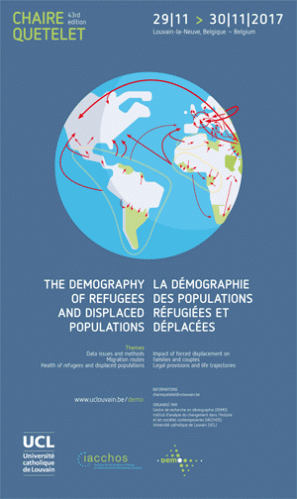43e Chaire Quetelet - La démographie des populations réfugiées et déplacées

Population displacement has reached unprecedented levels globally. The United Nations Refugee Agency (UNHCR) estimates that in 2015, more than 65 million people, or one person in 113, were forcibly displaced by conflict, persecution, violence or human rights violations. Two-thirds (62%) of these 65 million people were internally displaced, one-third were refugees (21.3 million) and 5% were asylum-seekers whose proceedings were ongoing (3.2 million). This global movement concerns almost all regions and territories, but the intensity of flows and reception conditions vary considerably throughout the world. A large majority of refugees are hosted in developing countries (86% of people of concern to UNHCR). Asia has the largest number of internally displaced persons (29.4 million), with large numbers of internally displaced persons in Syria and Iraq and many refugees in Pakistan, Lebanon, Jordan and Iran. In Western countries, the number of refugees hosted remains modest, even though refugee populations occupy an important place in public opinion and the debates that animate the political agenda. Recent political changes in the United States or in some European Union countries suggest that access conditions will continue to narrow and border controls will tighten in the coming years.
...
